Abstract
Several mono-, di, tetra-, and polysaccharides were screened for their ability to induced cellulase production by the tetrapolar hymenomycete Schizophyllum commune. Out of 21 carbohydrates screened, 4 (thiocellobiose, carboxymethylcellulose, cellobiose, and xylan) induced all three enzymes tested (carboxymethylcellulase, beta-glucosidase, and xylanase). The inducing effect increased with rising concentrations of the inducers up to a certain value, beyond which there was either a leveling off or a decrease of the enzymatic activities. The most powerful inducer, thiocellobiose, showed the highest activity at 0.5 mM. Cellobiose, carboxymethylcellulose, and xylan showed their highest activities at 1 mM and 1%, respectively. Surprisingly, sophorose did not enhance enzyme production. The enzymatic activities were monitored over a period of 24 h. Thiocelloboise elicited a response immediately after incubation, but with all other inducers there was a latency period before their effect could be measured. High-performance liquid chromatography showed no hydrolysis of thiocellobiose when incubated in the presence of S. commune extracellular enzymes.
Full text
PDF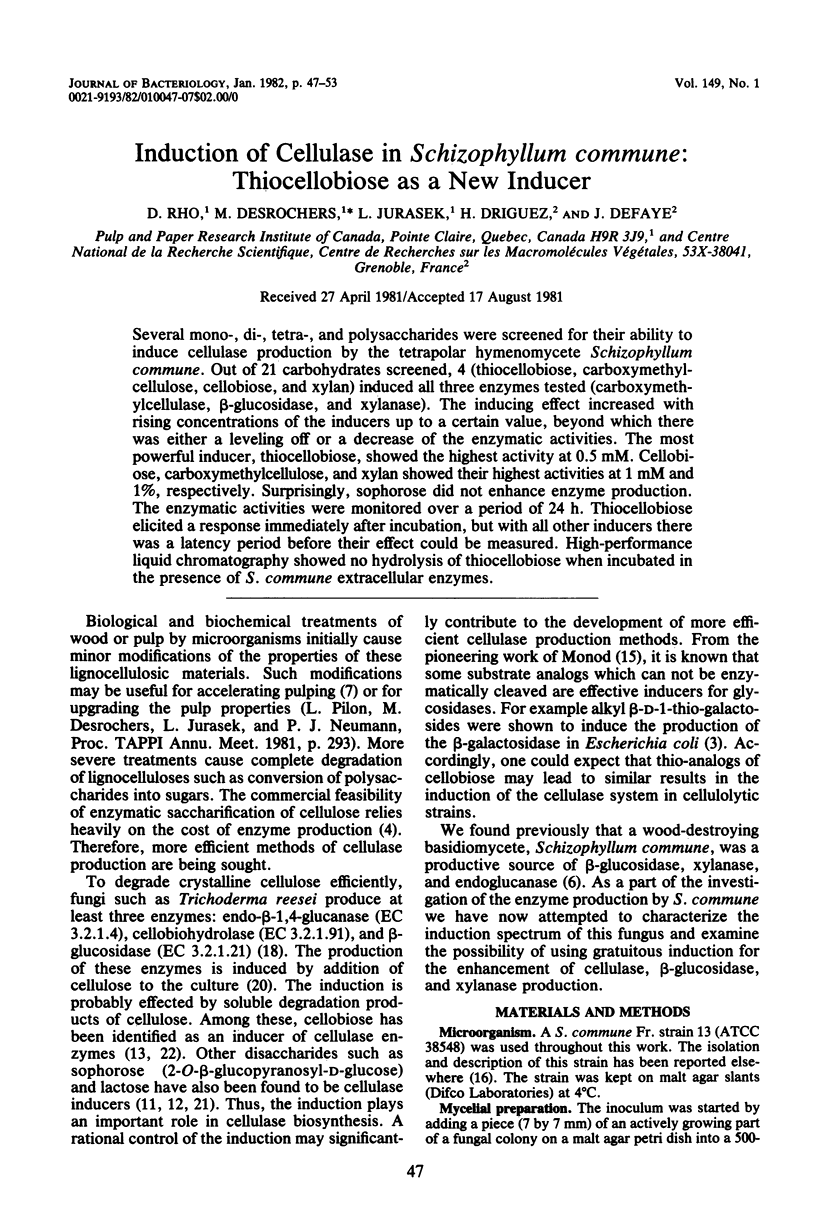
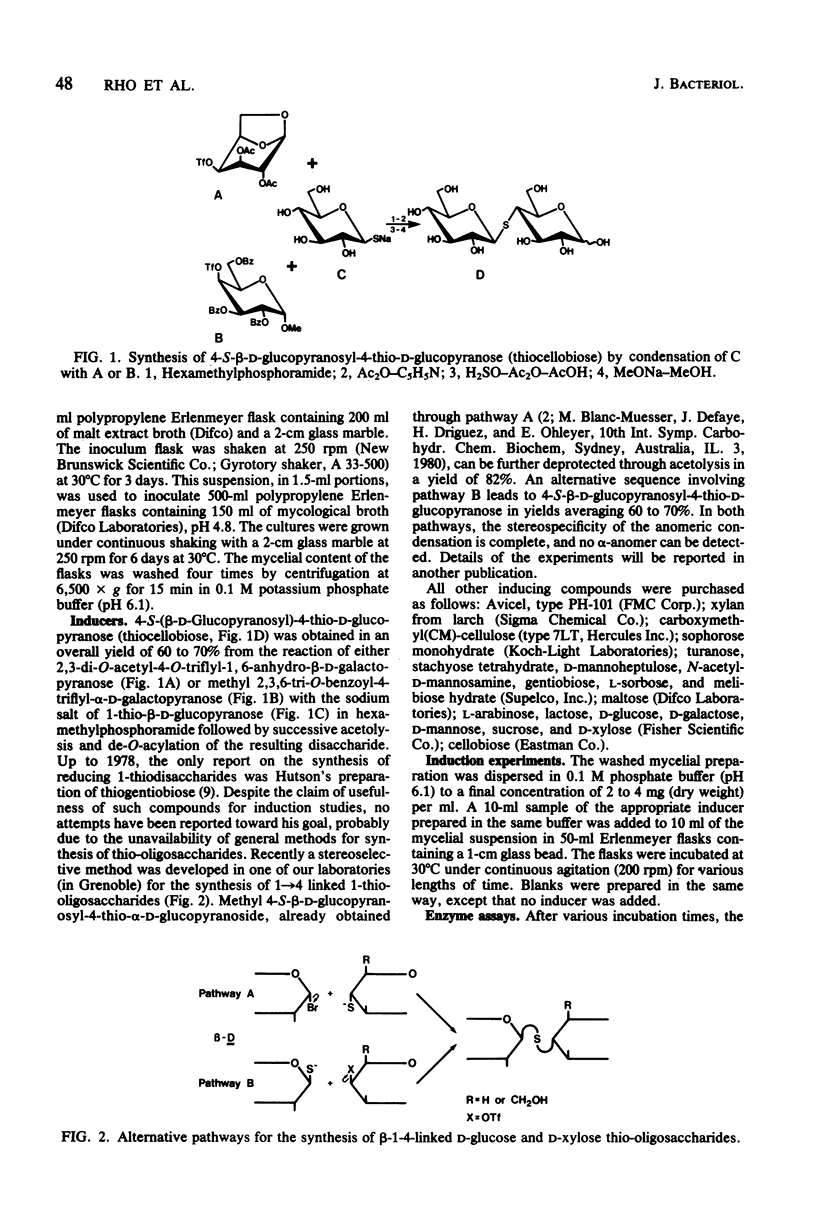
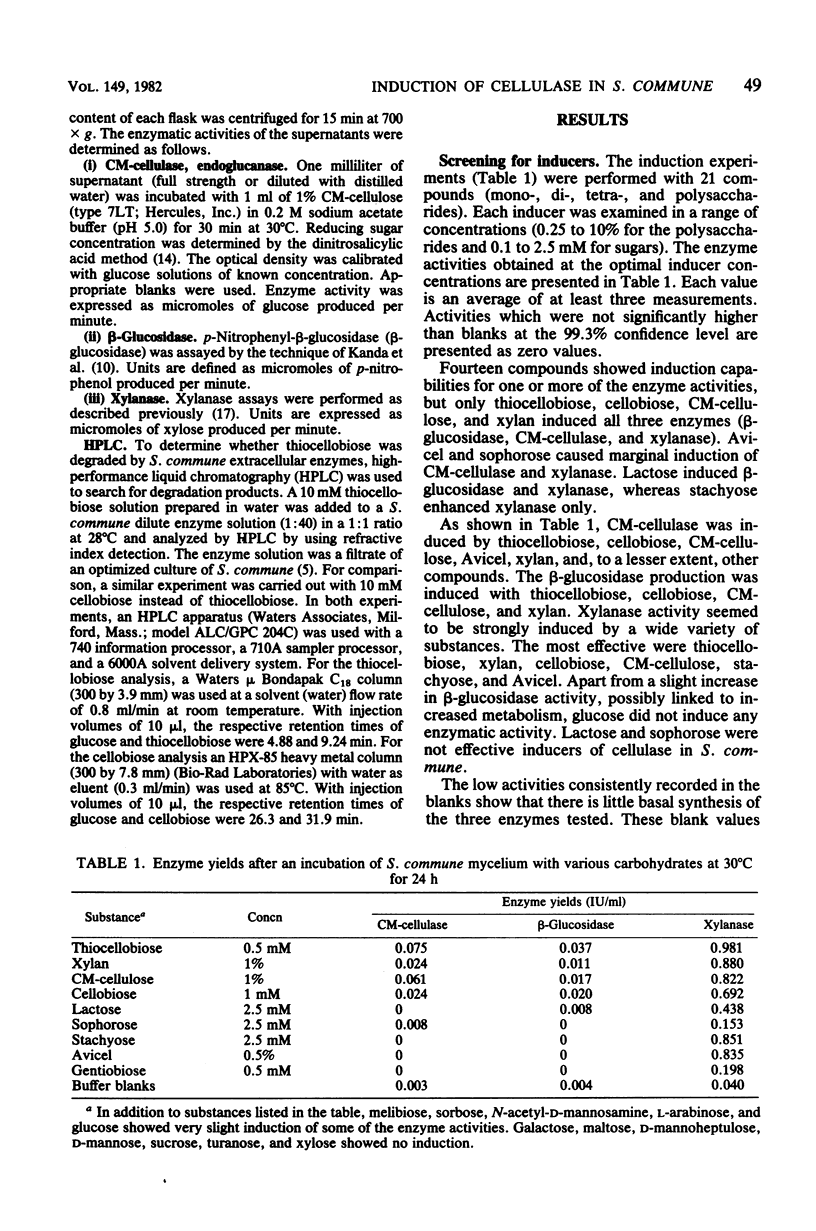
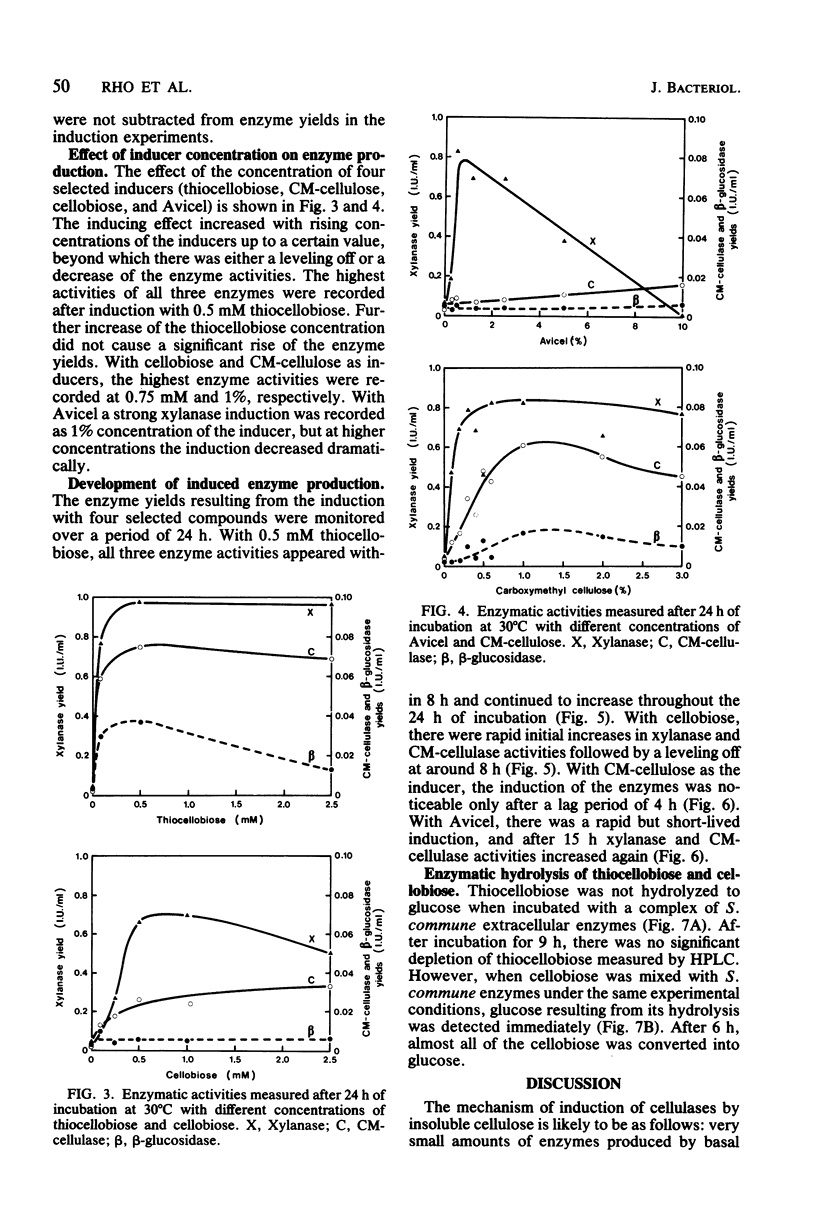
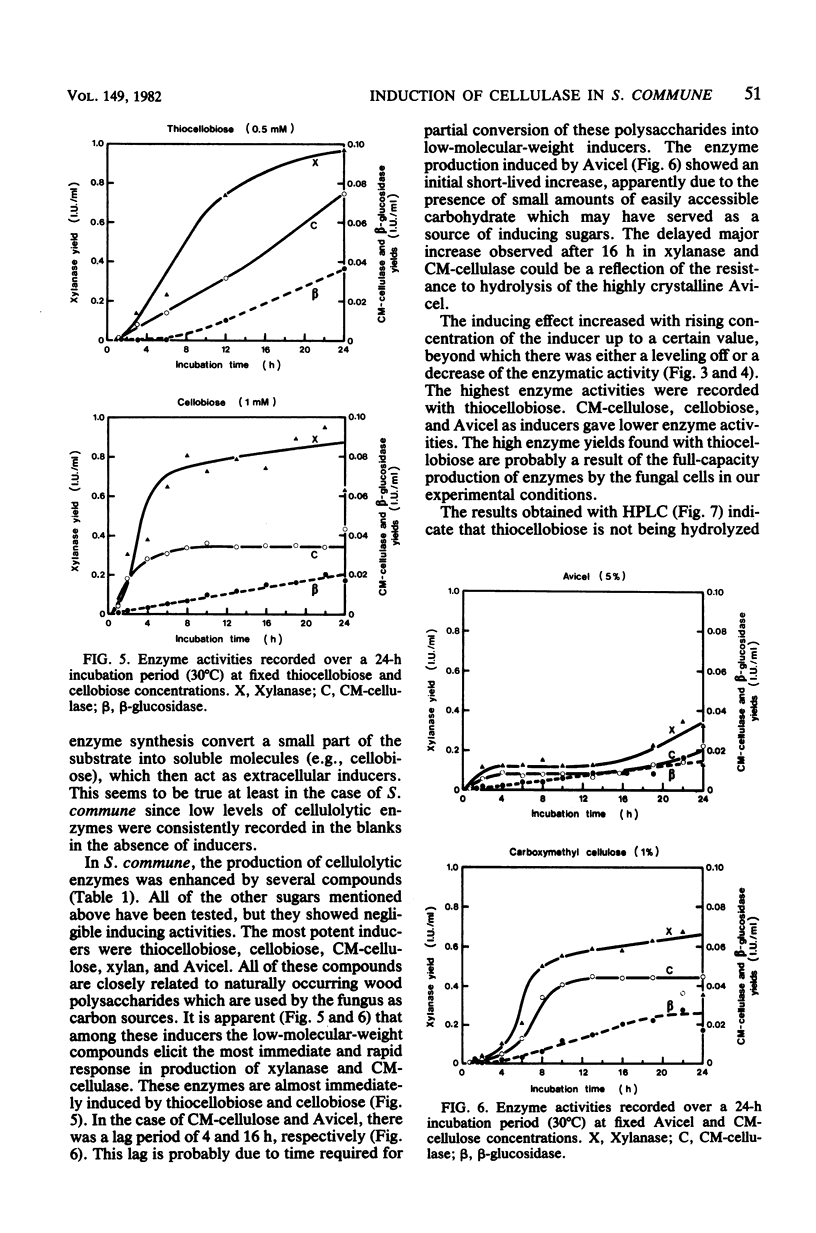
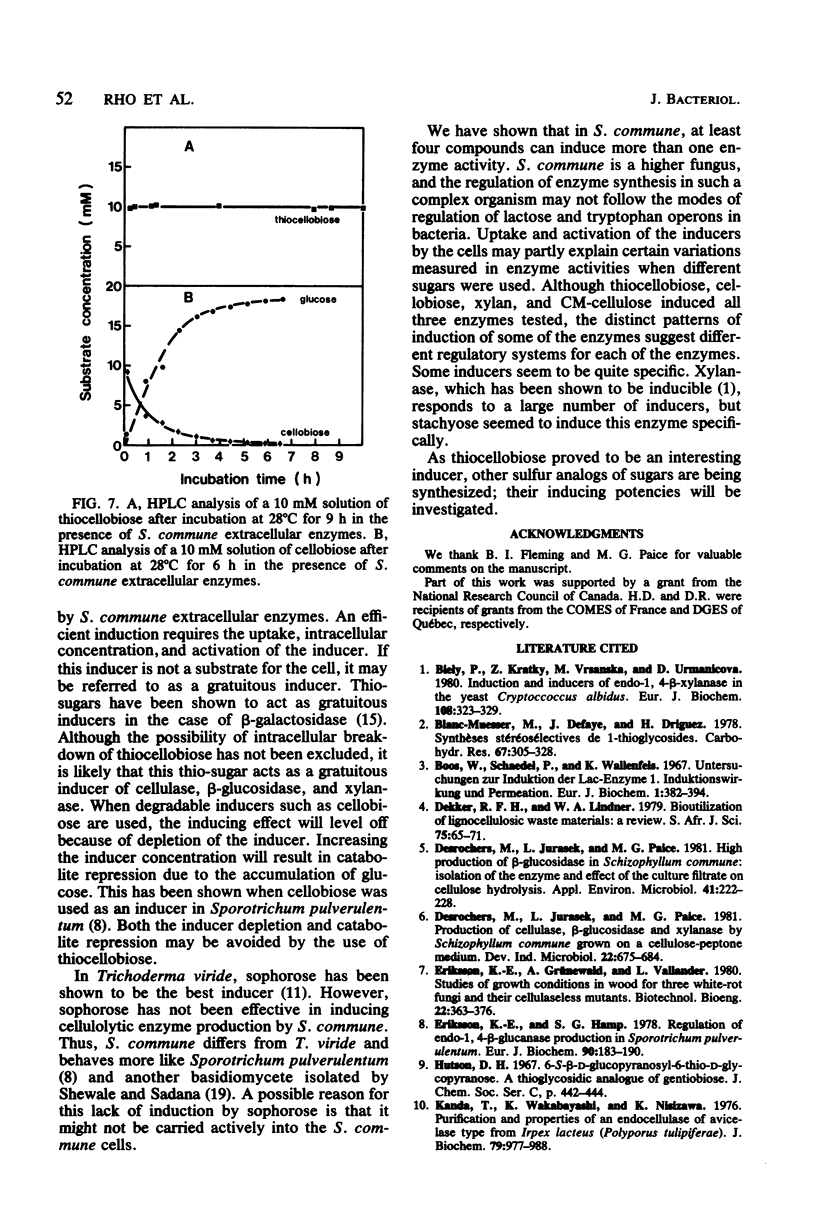
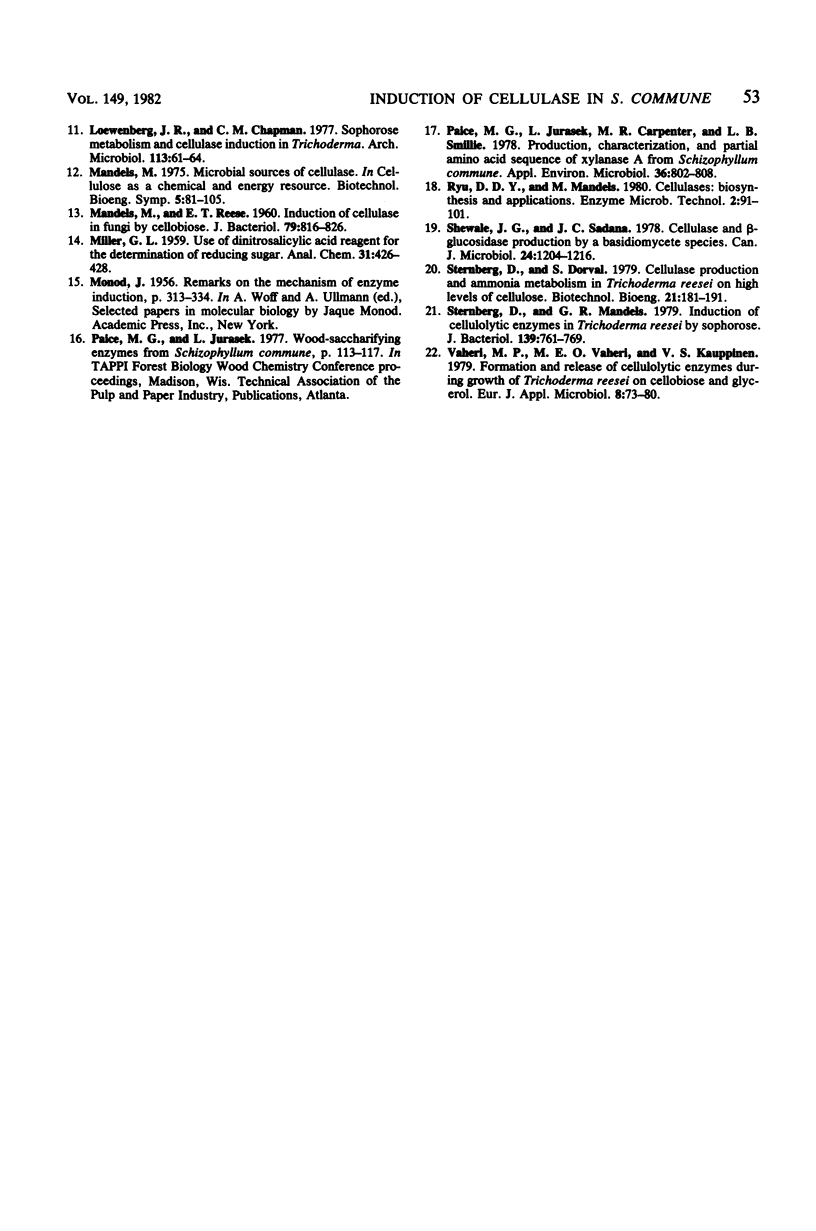
Selected References
These references are in PubMed. This may not be the complete list of references from this article.
- Biely P., Krátký Z., Vrsanská M., Urmanicová D. Induction and inducers of endo-1,4-beta-xylanase in the yeast Cryptococcus albidus. Eur J Biochem. 1980;108(1):323–329. doi: 10.1111/j.1432-1033.1980.tb04726.x. [DOI] [PubMed] [Google Scholar]
- Boos W., Schaedel P., Wallenfels K. Untersuchungen zur Induktion der Lac-Enzyme. 1. Induktionswirkung und Permeation. Eur J Biochem. 1967 Jun;1(4):382–394. doi: 10.1111/j.1432-1033.1967.tb00086.x. [DOI] [PubMed] [Google Scholar]
- Kanda T., Wakabayashi K., Nisizawa K. Purification and properties of an endo-cellulase of avicelase type from Irpex lacteus (Polyporus tulipiferae). J Biochem. 1976 May;79(5):977–988. doi: 10.1093/oxfordjournals.jbchem.a131165. [DOI] [PubMed] [Google Scholar]
- MANDELS M., REESE E. T. Induction of cellulase in fungi by cellobiose. J Bacteriol. 1960 Jun;79:816–826. doi: 10.1128/jb.79.6.816-826.1960. [DOI] [PMC free article] [PubMed] [Google Scholar]
- Mandels M. Microbial sources of cellulase. Biotechnol Bioeng Symp. 1975;(5):81–105. [PubMed] [Google Scholar]
- Paice M. G., Jurasek L., Carpenter M. R., Smillie L. B. Production, characterization, and partial amino acid sequence of xylanase A from Schizophyllum commune. Appl Environ Microbiol. 1978 Dec;36(6):802–808. doi: 10.1128/aem.36.6.802-808.1978. [DOI] [PMC free article] [PubMed] [Google Scholar]
- Shewale J. G., Sadana J. C. Cellulase and beta-glucosidase production by a basidiomycete species. Can J Microbiol. 1978 Oct;24(10):1204–1216. doi: 10.1139/m78-195. [DOI] [PubMed] [Google Scholar]
- Sternberg D., Dorval S. Cellulase production and ammonia metabolism in Trichoderma reesei on high levels of cellulose. Biotechnol Bioeng. 1979 Feb;21(2):181–191. doi: 10.1002/bit.260210205. [DOI] [PubMed] [Google Scholar]
- Sternberg D., Mandels G. R. Induction of cellulolytic enzymes in Trichoderma reesei by sophorose. J Bacteriol. 1979 Sep;139(3):761–769. doi: 10.1128/jb.139.3.761-769.1979. [DOI] [PMC free article] [PubMed] [Google Scholar]


